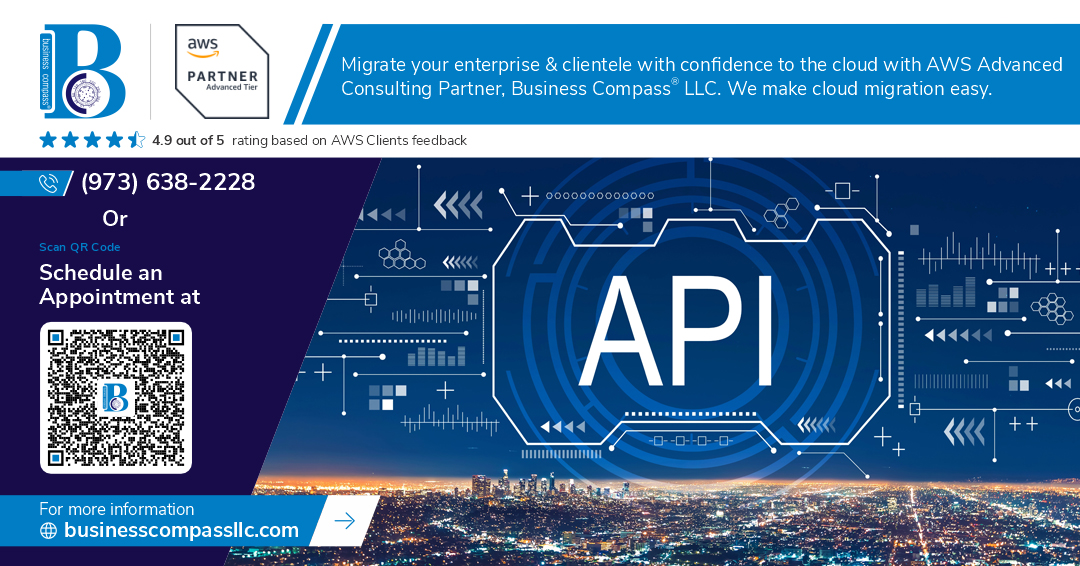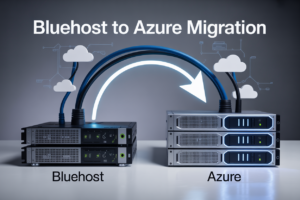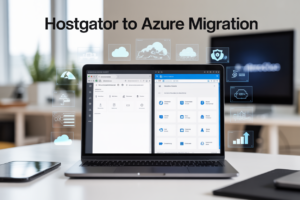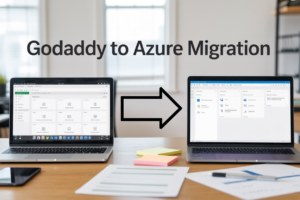Ever stood in the middle of a microservices migration, frantically Googling “API Gateway vs Load Balancer” while your team waits for a decision? Yeah, you’re not alone.
I’ve seen seasoned architects make costly infrastructure choices because they confused these two critical components. The wrong pick can lead to performance bottlenecks or security vulnerabilities that are painful to fix later.
This guide cuts through the confusion around API Gateway vs Load Balancer selection in microservices architecture. You’ll learn exactly when each shines, where they overlap, and how to make the right call for your specific use case.
The stakes are higher than most realize. Your choice affects everything from scalability to monitoring capabilities to your overall security posture.
So what makes these components fundamentally different in ways that actually matter to your architecture?
Understanding the Basics: API Gateways vs Load Balancers
A. Core Functions and Primary Purposes
API gateways and load balancers both play crucial roles in microservices architectures, but they serve fundamentally different purposes.
API gateways act as the traffic cops of your microservices ecosystem. They handle all the API requests coming in, route them to the appropriate services, and manage cross-cutting concerns like authentication, rate limiting, and request transformation. Think of them as smart doormen who check IDs, know exactly where each visitor needs to go, and might even change a visitor’s attire to match the dress code.
Load balancers, on the other hand, are all about distributing traffic evenly. Their primary job is to prevent any single server from becoming overwhelmed by spreading requests across multiple instances of the same service. They’re like efficient event staff directing people to different entrances of the same venue to prevent bottlenecks.
B. Technical Architecture Differences
From an architecture standpoint, these components occupy different positions in your system:
| API Gateway | Load Balancer |
|---|---|
| Application layer (L7) | Network/transport layer (L4) or application layer (L7) |
| API-aware | Protocol-aware |
| Typically deployed at the edge | Can be deployed at multiple tiers |
| Handles complex routing logic | Focuses on distribution algorithms |
API gateways sit at the boundary of your system, making them perfect for implementing security policies. They understand API contexts and can make routing decisions based on the content of requests.
C. Request Handling Mechanisms
The way these components process requests couldn’t be more different.
API gateways can perform complex operations on requests – they transform payloads, aggregate data from multiple services, and implement sophisticated routing rules based on request parameters or headers.
Load balancers typically don’t modify request content. Their job is to pick the best server for each request using algorithms like round-robin, least connections, or response time-based distribution.
D. Performance Impact Considerations
Both components impact your system’s performance, but in different ways:
API gateways add processing overhead but provide critical functionality like caching, which can dramatically improve response times for frequently requested data.
Load balancers add minimal latency while preventing service degradation by ensuring no single instance gets overloaded. They enhance availability through health checks, automatically routing traffic away from failing instances.
The real performance magic happens when you use them together – API gateways handling the complex API management tasks while load balancers ensure each service instance receives an appropriate amount of traffic.
API Gateway Deep Dive
Advanced Traffic Management Capabilities
API gateways aren’t just fancy doormen for your microservices – they’re traffic management ninjas. They handle complex routing patterns that basic load balancers can only dream about. Need to route requests based on content type, headers, or query parameters? An API gateway has you covered.
Think of it this way: a load balancer might say “send this request to one of our payment servers.” But an API gateway says “this is a premium customer request about a refund for order #12345, so route it to payment-service v2, but first apply the customer’s preferred language settings.”
API gateways shine with features like:
- Circuit breaking to prevent cascading failures
- Request shadowing to test new service versions
- Canary releasing for gradual rollouts
- A/B testing capabilities
- Blue-green deployment support
Security Features and Authentication
In the microservices world, security can’t be an afterthought. API gateways give you industrial-strength protection that basic load balancers simply don’t offer.
They handle:
- OAuth 2.0 and OpenID Connect flows
- JWT validation and token management
- Rate limiting per user/client
- IP whitelisting/blacklisting
- DDoS protection
The real magic happens when your gateway manages the entire authentication process. Your microservices can focus on their core logic without reimplementing auth checks. One service down? The gateway prevents unauthorized access to others automatically.
Request Transformation and Protocol Translation
API gateways are the ultimate translators for your microservices ecosystem. They transform requests on the fly, handling everything from simple header modifications to complete payload restructuring.
A modern gateway bridges communication gaps between:
- REST and GraphQL APIs
- SOAP and JSON formats
- HTTP/1.1 and HTTP/2
- WebSockets and server-sent events
This means your front-end team can use modern protocols while legacy services continue speaking their old language. No more building custom adapters or transformation layers for each service.
API Versioning and Documentation
Evolving APIs without breaking client applications is a headache – unless you have a proper gateway. Good gateways make versioning painless by supporting:
- Path-based versioning (/v1/users, /v2/users)
- Header-based version selection
- Query parameter versioning
- Content negotiation techniques
Beyond routing, they integrate with OpenAPI/Swagger to auto-generate documentation and maintain developer portals. Some even offer interactive testing consoles. Your API consumers get a single, consistent place to understand your entire API surface.
Monetization and Rate Limiting
Got APIs worth paying for? API gateways enable monetization strategies that load balancers can’t touch. They track API usage per consumer, apply different rate limits based on subscription tiers, and integrate with billing systems.
Common monetization features include:
- Usage-based billing
- Freemium models with quota enforcement
- Subscription tier management
- Analytics on API consumption patterns
- Developer portals for self-service subscriptions
Rate limiting protects both your business and infrastructure. Configure limits by user, endpoint, time window, or any combination. When someone hits their limit, the gateway handles the rejection – your services never see that traffic.
Load Balancer Essentials
Distribution Algorithms and Health Checks
Ever had an app crash because too many users hit one server while others sat idle? That’s why distribution algorithms matter in load balancers.
Round robin is the simplest – just rotating requests between servers. But in real-world microservices, it’s rarely enough. Least connections sends traffic to servers handling fewer connections, while weighted algorithms let you prioritize beefier machines in your cluster.
Health checks are the unsung heroes here. A load balancer continuously pings your services with HTTP requests, TCP connections, or custom scripts to check if they’re actually responsive. When a service fails checks, the load balancer automatically routes traffic elsewhere – no human intervention needed.
Status Code Monitoring:
200-299: Healthy
300-399: Warning
400+: Unhealthy
Without proper health checks, you’re basically flying blind in microservices architecture.
Session Persistence Options
In microservices, sometimes you need the same user to hit the same backend service repeatedly. This is session persistence (or “sticky sessions”), and it’s trickier than it sounds.
Your options include:
- Cookie-based persistence: The load balancer drops a cookie on the client so it knows where to send them next time
- Source IP affinity: Routes based on the client’s IP address
- Application-controlled persistence: Your app explicitly tells the load balancer where to send users
The challenge? True microservices should be stateless, but real-world apps often aren’t. Pick the wrong persistence method, and your service scaling gets messy fast.
High Availability and Fault Tolerance
Microservices are supposed to be resilient, but your load balancer can become a single point of failure. That’s why you need multiple load balancer instances across different availability zones.
Active-passive configurations keep a standby load balancer ready to jump in when the primary fails. Active-active setups share the load across multiple balancers simultaneously.
The best load balancers detect and respond to failures in milliseconds – before users even notice. They should automatically reintegrate recovered services without manual intervention.
Geographic distribution is crucial too. For globally-deployed microservices, you need load balancers in multiple regions to maintain performance and handle regional outages.
Remember: your architecture is only as resilient as its most vulnerable component.
Decision Criteria for Microservices Architecture
A. Traffic Patterns and Usage Scenarios
Ever struggled to decide between an API gateway and a load balancer? The traffic patterns you’re dealing with make all the difference.
API gateways shine when your microservices need complex request routing, transformation, or composition. If clients are hitting multiple services or need different data formats, an API gateway handles that complexity beautifully. They’re perfect for public-facing applications where you need to unify various backends under one consistent interface.
Load balancers, on the other hand, rule at high-volume, homogeneous traffic distribution. When your challenge is primarily about distributing identical requests across multiple instances of the same service, a load balancer is simpler and more efficient.
Consider these scenarios:
- E-commerce platform: API gateway (handles product searches, cart management, user profiles)
- Video streaming backend: Load balancer (distributes connection requests to identical streaming servers)
B. Scalability Requirements
The scale you’re targeting dramatically impacts your choice between these technologies.
Load balancers excel at horizontal scaling of identical services. They’re built for this – efficiently distributing massive traffic volumes across multiple instances with minimal overhead.
API gateways become essential when scaling complex service ecosystems with different growth rates. They help manage cross-cutting concerns that would otherwise become bottlenecks as your architecture expands.
Ask yourself: “Am I scaling out identical services, or managing a diverse ecosystem of services with different scaling needs?” Your answer points to your solution.
C. Security Needs Assessment
Security requirements often tip the scales in the api gateway vs load balancer debate.
API gateways offer comprehensive security features:
- Authentication/authorization
- Rate limiting
- Request validation
- Token management
- DDoS protection
Load balancers provide more basic security like TLS termination and some network-level filtering.
If your microservices architecture handles sensitive data or faces public networks, an API gateway’s security capabilities may be non-negotiable. For internal traffic between trusted services, a load balancer’s simpler security model might be sufficient.
D. Budget and Resource Constraints
Let’s talk money and resources – because they matter.
API gateways typically demand more:
- Higher licensing costs for commercial options
- More complex configuration
- Additional operational expertise
- Greater computational resources
Load balancers offer:
- Lower resource footprint
- Simpler configurations
- Often included in cloud platforms at minimal cost
For startups or smaller projects with tight budgets, a load balancer might be the pragmatic first step. As your microservices architecture matures and your needs grow more sophisticated, the investment in an API gateway becomes easier to justify.
Implementation Strategies
Using API Gateways and Load Balancers Together
Most successful microservices architectures don’t force an either/or choice—they combine both tools strategically. Think of it as a tag team: load balancers handle the raw traffic distribution while API gateways manage the business logic layer.
A common pattern looks like this: external traffic hits the load balancer first, which distributes it across multiple API gateway instances. The gateways then handle authentication, routing, and transformations before sending requests to specific services.
This combination gives you both high availability and sophisticated request handling. Your infrastructure becomes more resilient against traffic spikes while maintaining fine-grained control over API access.
Cloud-Native vs Self-Hosted Solutions
The “build vs buy” decision hits differently in 2023:
| Approach | Pros | Cons |
|---|---|---|
| Cloud-Native (AWS API Gateway, Azure APIM) | Quick setup, managed scaling, integrated monitoring | Vendor lock-in, higher costs at scale |
| Self-Hosted (Kong, Nginx) | Complete control, potentially lower costs, customization | Operational overhead, scaling responsibility |
Most teams are moving toward cloud-native solutions for speed to market. Self-hosted makes sense when you have specific compliance requirements or when your traffic patterns are predictable enough to justify the operational investment.
Popular Tools and Technologies Comparison
The market leaders each have their sweet spots:
- Kong: Open-source champion with extensive plugin ecosystem
- AWS API Gateway: Seamless integration with Lambda and AWS services
- Nginx/HAProxy: Battle-tested load balancers with low overhead
- Istio: Service mesh approach combining gateway features with mesh capabilities
- Traefik: Container-native with auto-discovery features
Migration Paths for Existing Systems
Transitioning to a modern gateway/balancer setup doesn’t have to be a “big bang” event. Start with the strangler pattern:
- Deploy your gateway/balancer alongside existing architecture
- Gradually route specific endpoints through the new system
- Monitor performance and fix issues incrementally
- Decommission old routes once traffic successfully moves
The smartest migrations start with non-critical, low-volume services to build confidence before touching core functionality.
Real-World Case Studies
A. E-Commerce Platform Architecture
Ever seen Amazon handle millions of requests during Prime Day? That’s complex architecture at work. A major e-commerce platform we worked with initially used only load balancers for their microservices. They quickly hit roadblocks when implementing personalization features.
Their solution? They deployed an API gateway that handled:
- User authentication and rate limiting
- Request routing to specialized services
- Response caching for product information
While keeping load balancers for:
- Traffic distribution across service instances
- Health checks on backend servers
- Handling sudden traffic spikes
Post-implementation, they saw API response times drop by 40% and were able to add new microservices in days instead of weeks.
B. Financial Services Implementation
A global payment processor had an interesting challenge: they needed ultra-high availability while meeting strict security requirements.
Their hybrid approach looks like this:
- API gateways at the edge handle authentication, encryption, and transaction routing
- Internal load balancers distribute workloads across processing clusters
- Geographic load balancers direct traffic to the nearest data center
When a security vulnerability emerged, they only needed to update the gateway layer rather than every service. During a 10x traffic spike from a partner promotion, the load balancers seamlessly scaled while the gateway maintained consistent security policies.
C. Content Delivery Solutions
A streaming media company faced constant buffering issues during peak viewing hours. Their initial setup using just load balancers couldn’t prioritize traffic effectively.
They rebuilt with:
- API gateways to manage content rights, user profiles, and viewing histories
- Multiple load balancer tiers for different content types
- Regional load balancing combined with CDN integration
The real magic happened when they implemented content-aware routing through their API gateway. Premium subscribers got priority bandwidth allocation, while the load balancers handled the actual content delivery scaling.
D. IoT Systems Architecture Examples
IoT deployments are where the api gateway vs load balancer debate gets really interesting. A smart city implementation we analyzed used both in fascinating ways:
- API gateways handled device authentication and protocol translation (MQTT, CoAP, HTTP)
- Load balancers managed millions of concurrent device connections
- Specialized gateways processed time-sensitive traffic (emergency services)
They built a tiered architecture where simple sensors communicated through load balancers, while complex interactions (like traffic management) went through dedicated API gateways. This reduced data processing overhead by 60% while maintaining sub-second response times for critical systems.
Choosing between API Gateways and Load Balancers in a microservices architecture requires careful consideration of your specific needs. API Gateways excel in providing advanced traffic management, security, and API lifecycle management, making them ideal for complex applications with diverse client needs and strict security requirements. Load Balancers offer high-performance distribution of network traffic, ensuring reliability and scalability for applications with consistent, high-volume traffic patterns.
The right choice ultimately depends on your architectural goals, traffic patterns, and security requirements. Many mature microservices implementations benefit from using both technologies in tandem—load balancers for efficient traffic distribution at the network level and API gateways for managing, securing, and optimizing API traffic. As you design your architecture, consider starting with the solution that addresses your most pressing current needs, while leaving room to incorporate additional components as your system evolves.


















